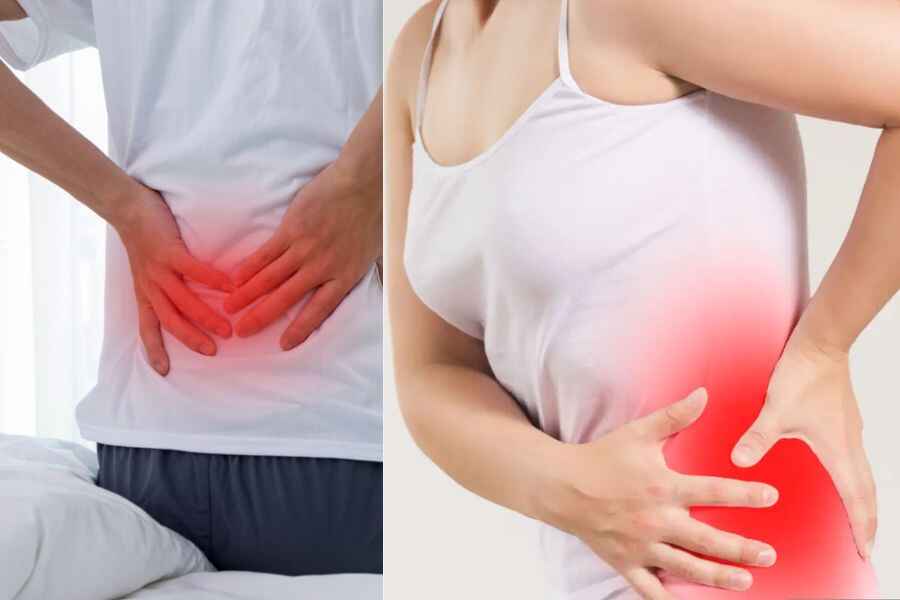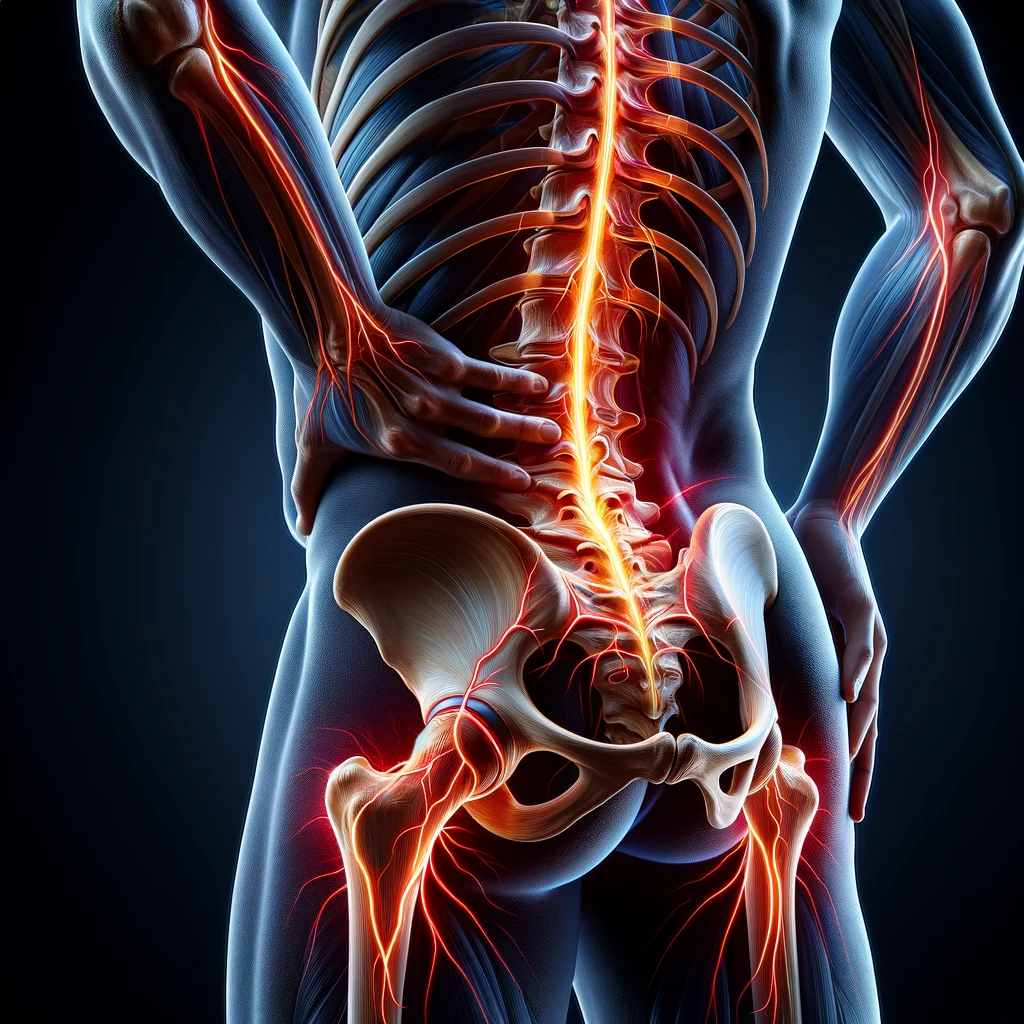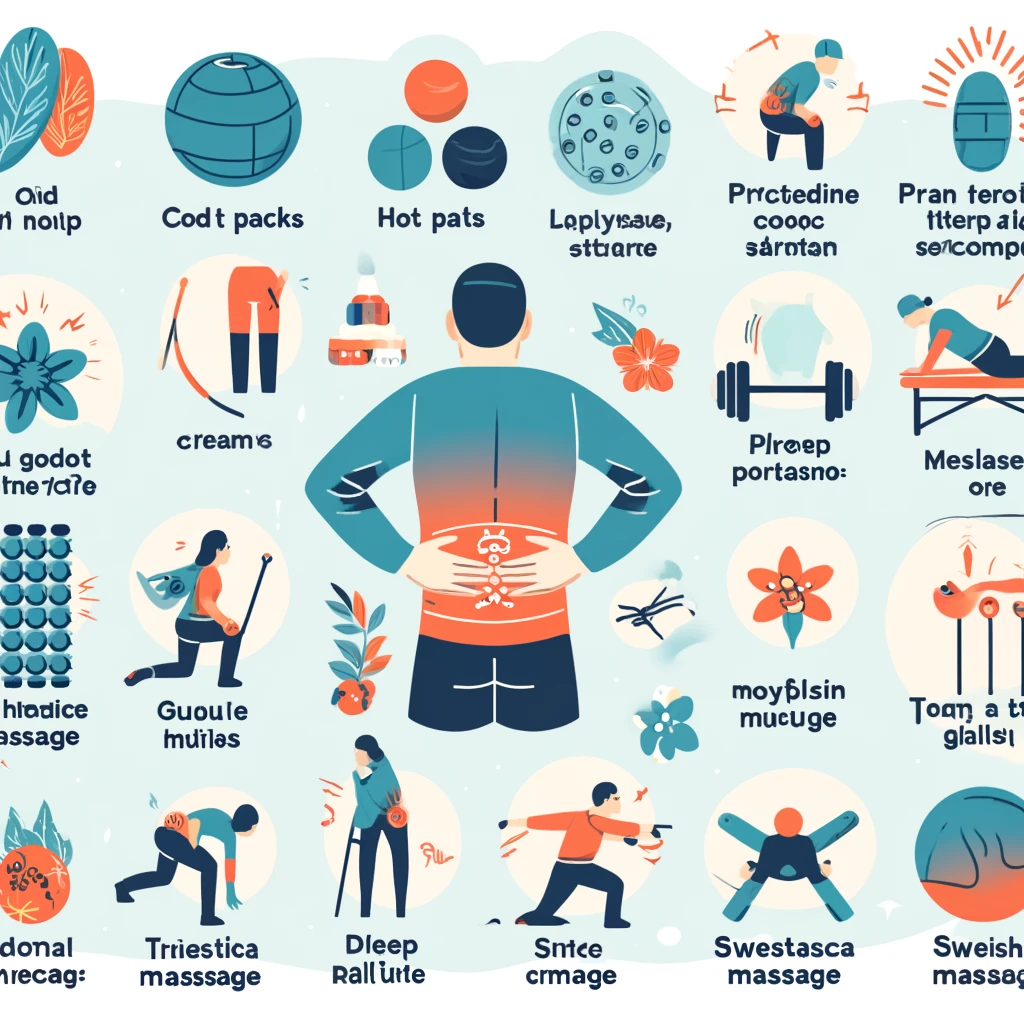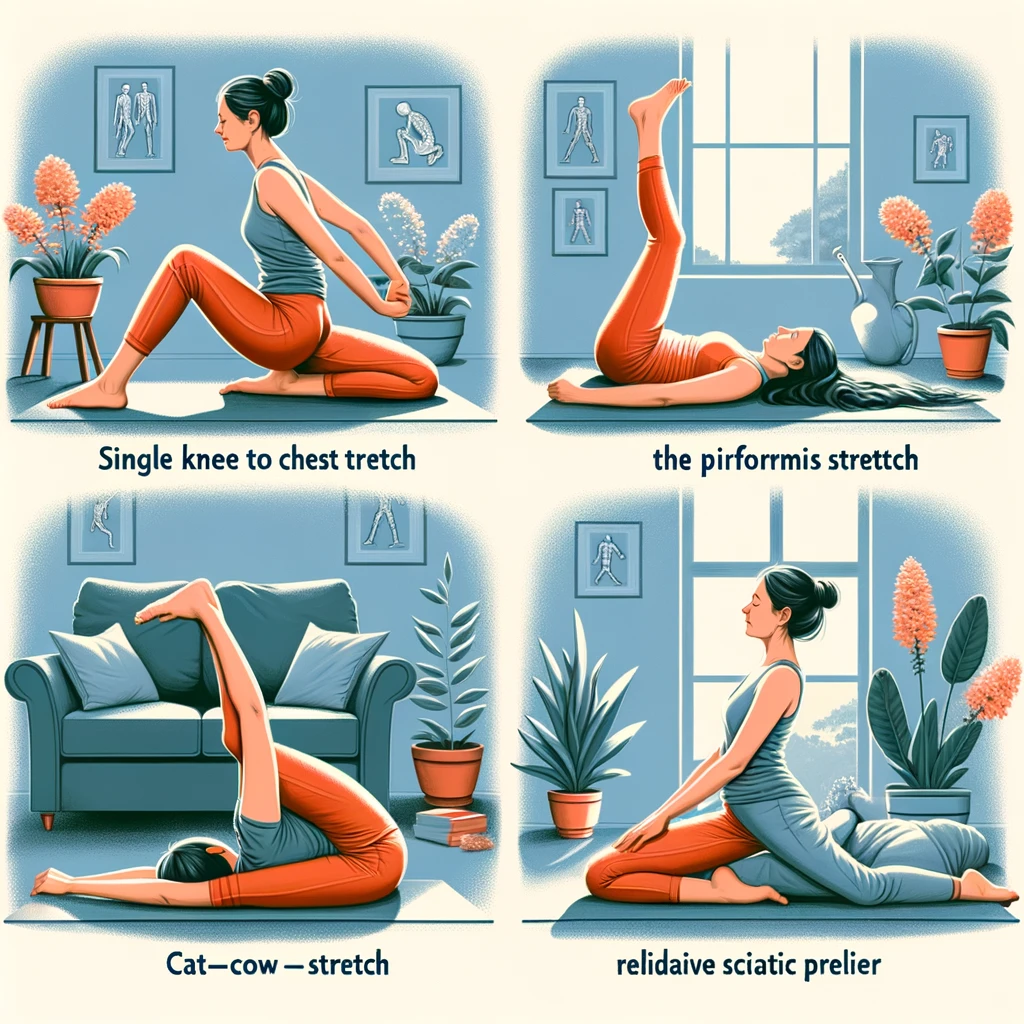
Immediate Sciatica Pain Relief: Best Home Remedies, Medical Options, 5 Exercises
Last updated on December 12th, 2025 at 05:59 pm
It stretches from your lower back and spine, through your hips and buttocks, and then branches down each leg. This important nerve can become irritated, damaged, inflamed, compressed, or pinched, causing pain, discomfort, weakness, and sometimes tingling or numbness in your legs, hips, or buttocks.
Immediate Sciatica Pain Relief: If you have sciatica, you know how painful it can be and how quickly you want relief from the pain. The sciatic nerve irritation can make you feel helpless. The sciatic nerve is the largest, thickest, and longest nerve in your body.
If you want to know how to get quick relief from sciatic nerve pain, the best answer is to visit a doctor and get a specific treatment plan for your sciatica problem. Experts at Midwest Orthopedic Specialty Hospital can treat your sciatica by identifying the underlying cause and providing treatment for immediate pain relief.

In the United States, 10% to 40% of people experience sciatica at some point in their lives. Fortunately, 80% to 90% of people recover without surgery, and about half recover within six weeks. Whether your sciatica pain is due to a car accident, a herniated disc injury, or a condition like a piriformis syndrome (spasm of the piriformis muscle), there are many conservative treatment options available to reduce your symptoms right now.
Table of Contents
Symptoms of Sciatica
- Lower back pain
- Buttock pain
- Leg pain
- Hip pain
- Burning or tingling sensation
- Numbness in the leg or foot
- Weakness in the leg or foot
- Pain worsens with movement
- Difficulty standing up or sitting down
- Pain radiating down the leg
These symptoms can vary in intensity and may affect one side of the body.

Causes of Sciatic Nerve Pain
- Herniated disc: A bulging or ruptured disc that presses on the nerve.
- Spinal stenosis: Narrowing of the spinal canal, compressing the nerve.
- Piriformis syndrome: Muscle spasm in the buttocks irritating the nerve.
- Degenerative disc disease: Wear and tear on spinal discs, affecting the nerve.
- Spondylolisthesis: Slipped vertebra that can pinch the nerve.
- Injury to the spine: Trauma that impacts the nerve.
- Tumors on the spine: Growths that press on the nerve.
- Pregnancy: Increased weight and changes in posture that stress the nerve.
- Sitting for long periods: Prolonged sitting can aggravate the nerves.
- Obesity: Excess body weight that puts extra pressure on the spine.
Immediate Sciatica Pain Relief Home Remedies
- Cold compress: Apply an ice pack to the affected area for 15-20 minutes.
- Heat therapy: Use a heating pad on the painful area to relax muscles.
- Over-the-counter pain relievers: Take ibuprofen or acetaminophen for pain relief.
- Stretching exercises: Gentle stretches to ease nerve compression.
- Yoga: Specific poses can help relieve sciatica pain.
- Massage therapy: Gently massage the painful area to reduce muscle tension.
- Topical pain relievers: Apply creams or gels that contain menthol or capsaicin.
- Posture correction: Maintain good posture while sitting and standing.
- Avoid prolonged sitting: Take breaks and move around every 20-30 minutes.
- Stay active: Light activities like walking can help reduce pain.
These remedies can provide temporary relief and help manage sciatica pain at home.

Massage Techniques for Immediate Sciatica Relief:
- Deep Tissue Massage: This technique involves applying firm pressure and slow movements to target deep muscles and surrounding tissue, promoting relaxation and improved blood circulation in the affected area.
- Trigger Point Therapy: This method identifies and treats specific muscle knots that can help alleviate sciatica pain.
- Myofascial Release: This gentle approach involves applying light pressure to the fascia and the connective tissue surrounding muscles to reduce tightness and improve mobility, ultimately reducing pain and increasing flexibility.
- Swedish Massage: This relaxing technique utilizes smooth, flowing strokes to promote relaxation and enhance blood circulation. It can help reduce stress and tension that may exacerbate sciatica pain.
Benefits of Massage for Sciatica Relief:
- Relaxes Muscles: Massage helps relax tight muscles, reducing pressure on the sciatic nerve.
- Better Blood Flow: Increased blood flow promotes healing and reduces inflammation, easing sciatica pain.
- Natural Pain Relief: Massage triggers the release of endorphins, providing natural pain relief.
- Breaks Down Scar Tissue: Massage techniques can break down scar tissue, improve mobility, and reduce pain.
Immediate Sciatica Pain Relief Medical Options
- Prescription painkillers: Stronger medications prescribed by a doctor for severe pain.
- Muscle relaxants: Medications to relieve muscle spasms.
- Anti-inflammatory drugs: Prescription-strength NSAIDs to reduce inflammation.
- Corticosteroid injections: Steroid injections to reduce inflammation and pain.
- Nerve block injections: Injections to block pain signals from the nerve.
- Physical therapy: Customized exercises and treatments to relieve pain and improve mobility.
- Chiropractic adjustments: Spinal manipulation to alleviate nerve pressure.
- Epidural steroid injections: Steroid injection into the epidural space around the spinal nerves.
- Acupuncture: Needling technique to relieve pain and promote healing.
- TENS therapy: Transcutaneous electrical nerve stimulation to reduce pain perception.
These medical options can provide more immediate and effective relief for sciatica pain, especially in severe cases.
You can promptly see your doctor for a checkup, and then you can seek their recommendations.
Read More: Non-Surgical Treatment Options for Sciatica Pain
Immediate Sciatica Pain Relief Exercises:

Single Knee to Chest Stretch:
This simple stretch can help release lower back and buttock tension, providing immediate relief from sciatica pain. To perform this stretch, lie on your back with both legs extended. Bend one knee and bring it up towards your chest, holding onto your thigh or shin. Hold the stretch for 15–30 seconds, then switch legs. Repeat as needed to help alleviate discomfort.
Piriformis Stretch:
The piriformis muscle in the buttocks can sometimes compress the sciatic nerve, leading to pain and discomfort. Stretching this muscle can help alleviate pressure on the sciatic nerve and reduce pain. To perform the piriformis stretch, sit on the floor with one leg crossed over the other. Lean forward slightly until you feel a gentle stretch in the buttocks of the crossed leg. Hold the stretch for 15–30 seconds, then switch legs. Repeat as necessary to ease sciatica symptoms.
Cat-Cow Stretches:
These dynamic stretches are excellent for improving flexibility in the spine and hips, which can help reduce sciatica discomfort. Start on your hands and knees, with your wrists aligned under your shoulders and your knees under your hips. Inhale as you arch your back upwards, dropping your belly towards the floor and lifting your head and tailbone towards the ceiling (the “cow” position). Exhale as you round your back upwards, tucking your chin towards your chest and drawing your belly button towards your spine (the “cat” position). Repeat this sequence 5–10 times, moving slowly and gently to avoid strain.
Seated Spinal Twist:
This seated stretch can help relieve pressure on the sciatic nerve, providing quick relief from sciatica pain. Sit on the floor with your legs extended in front of you. Bend one knee and cross it over the other leg, placing the foot flat on the floor. Twist your torso towards the bent knee, placing the opposite elbow on the outside of the knee for support. Hold the stretch for 15–30 seconds, then switch sides. Repeat as needed to alleviate discomfort and promote relaxation.
Preventive Measures for Sciatica:
Preventing sciatica involves maintaining good posture, regular exercise, and proper lifting techniques to avoid nerve pain. Exercise and stretching help keep muscles strong and flexible, reducing the risk of sciatica. When lifting heavy objects, be cautious and avoid excessive bending to prevent back injuries. A balanced diet and healthy weight can alleviate pressure on the nerves.
Managing stress through deep breathing or meditation can relax muscles and reduce tension, preventing sciatica. Wearing supportive shoes and taking breaks can protect the back and lower the risk of developing sciatica. By incorporating these habits into their daily lives, individuals can decrease the likelihood of experiencing sciatic nerve pain and maintain their overall well-being.
When to Seek Professional Help:
Knowing when to ask for help from a doctor for sciatica is essential. Even though you can try home remedies first, if your pain persists or worsens, it’s time to see a doctor. Look for signs like severe pain, numbness, weakness, or difficulty controlling your bladder or bowel movements.
These are all signs that you need to see a doctor. When you notice them, they will examine you and may perform tests such as X-rays or MRI scans to determine the cause of your sciatica. Understanding this helps you take control of your treatment and find the right solution for you. So, if you’re unsure what to do or your pain is worsening, don’t hesitate to ask for help.
Frequently Asked Questions
How can I instantly relieve sciatica?
Instant relief from sciatica can be achieved by applying ice packs to the affected area to reduce inflammation and numb the pain. Additionally, practicing gentle stretches targeting the lower back and legs can help alleviate tension and provide temporary relief.
How do you treat sciatica in 8 minutes?
While complete treatment of sciatica in just 8 minutes may not be feasible, you can perform quick exercises such as knee-to-chest stretches or gentle yoga poses to alleviate discomfort temporarily. However, following a comprehensive treatment plan prescribed by a healthcare professional for long-term relief is essential.
What is the best pain reliever for sciatica?
The best pain relief for sciatica often involves a combination of approaches, including over-the-counter pain medications like ibuprofen or acetaminophen, gentle stretching exercises, and hot or cold therapy. In severe cases, your doctor may prescribe stronger pain medications or recommend therapeutic interventions such as physical therapy or injections.
What drinks help sciatica?
Certain drinks, like ginger tea, turmeric milk, and cherry juice, have anti-inflammatory properties that may help reduce sciatica pain. These beverages can help alleviate inflammation and provide temporary relief from discomfort.
What makes sciatica worse?
Activities that pressure the sciatic nerve, such as sitting for prolonged periods, lifting heavy objects incorrectly, or engaging in high-impact exercises, can worsen sciatica symptoms. Poor posture and obesity can also exacerbate sciatica pain.
What are the last stages of sciatica?
In the last stages of sciatica, individuals may experience chronic pain that persists despite treatment and ongoing weakness or numbness in the affected leg. Severe cases may also lead to difficulty performing daily activities due to persistent discomfort.
Does walking stop sciatica?
Walking can help alleviate sciatica pain by promoting blood flow and releasing endorphins, natural pain-relieving chemicals. However, it’s important to avoid activities that exacerbate your symptoms and to consult with your doctor before starting any exercise regimen.
What are the pressure points for sciatica?
Pressure points for sciatica relief include areas along the lower back, buttocks, hips, and legs, where applying gentle pressure or massage techniques can help alleviate pain and tension. These pressure points may vary from person to person, so it’s essential to experiment and find what works best for you.
Does sciatica go away?
In many cases, sciatica resolves independently with time and proper treatment. However, severe or chronic cases may require medical intervention to manage symptoms effectively and prevent recurrence.
Summary:
This guide provides tips for quick relief from sciatica pain, including home remedies, medical options, exercises, preventive measures, and when to seek medical attention.
Sciatica causes sharp pain, numbness, weakness, and discomfort along the sciatic nerve. You can use cold and hot packs and creams at home, maintain good posture, stretch gently, and try self-massage. Medical options include pills, injections, and alternative treatments like acupuncture.
Exercises such as knee-to-chest stretches, piriformis stretches, and twists can also help. Preventing sciatica involves maintaining good posture, staying active, managing weight and stress, wearing comfortable shoes, and setting up a proper workspace.
If your pain persists or worsens, consult a doctor who can recommend treatments like physical therapy or medications to help you feel better. Remember to seek help when needed to alleviate your symptoms.
Reference:
Sciatica pain treatment: Medical options, exercises, and home remedies


